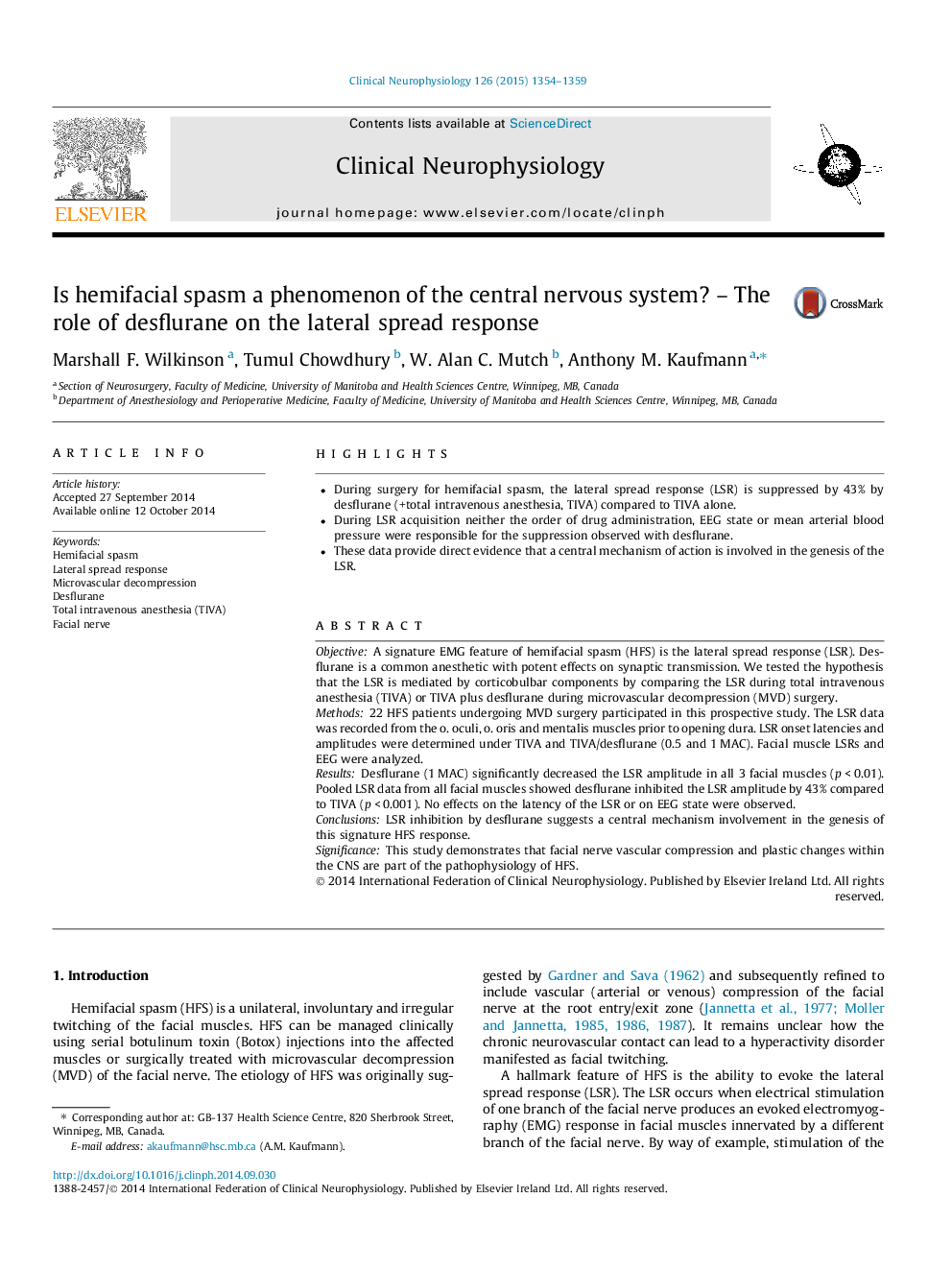| Article ID | Journal | Published Year | Pages | File Type |
|---|---|---|---|---|
| 6007724 | Clinical Neurophysiology | 2015 | 6 Pages |
â¢During surgery for hemifacial spasm, the lateral spread response (LSR) is suppressed by 43% by desflurane (+total intravenous anesthesia, TIVA) compared to TIVA alone.â¢During LSR acquisition neither the order of drug administration, EEG state or mean arterial blood pressure were responsible for the suppression observed with desflurane.â¢These data provide direct evidence that a central mechanism of action is involved in the genesis of the LSR.
ObjectiveA signature EMG feature of hemifacial spasm (HFS) is the lateral spread response (LSR). Desflurane is a common anesthetic with potent effects on synaptic transmission. We tested the hypothesis that the LSR is mediated by corticobulbar components by comparing the LSR during total intravenous anesthesia (TIVA) or TIVA plus desflurane during microvascular decompression (MVD) surgery.Methods22 HFS patients undergoing MVD surgery participated in this prospective study. The LSR data was recorded from the o. oculi, o. oris and mentalis muscles prior to opening dura. LSR onset latencies and amplitudes were determined under TIVA and TIVA/desflurane (0.5 and 1 MAC). Facial muscle LSRs and EEG were analyzed.ResultsDesflurane (1 MAC) significantly decreased the LSR amplitude in all 3 facial muscles (p < 0.01). Pooled LSR data from all facial muscles showed desflurane inhibited the LSR amplitude by 43% compared to TIVA (p < 0.001). No effects on the latency of the LSR or on EEG state were observed.ConclusionsLSR inhibition by desflurane suggests a central mechanism involvement in the genesis of this signature HFS response.SignificanceThis study demonstrates that facial nerve vascular compression and plastic changes within the CNS are part of the pathophysiology of HFS.
